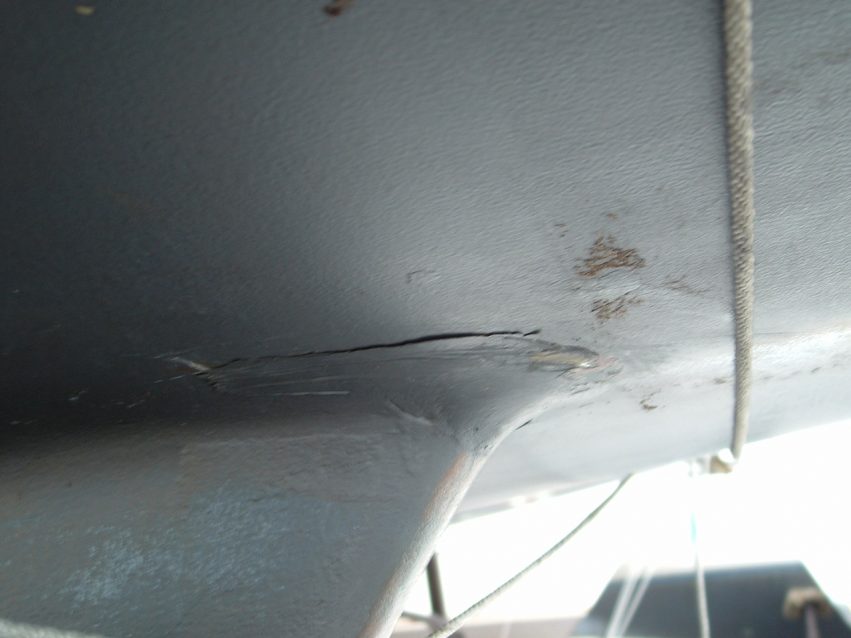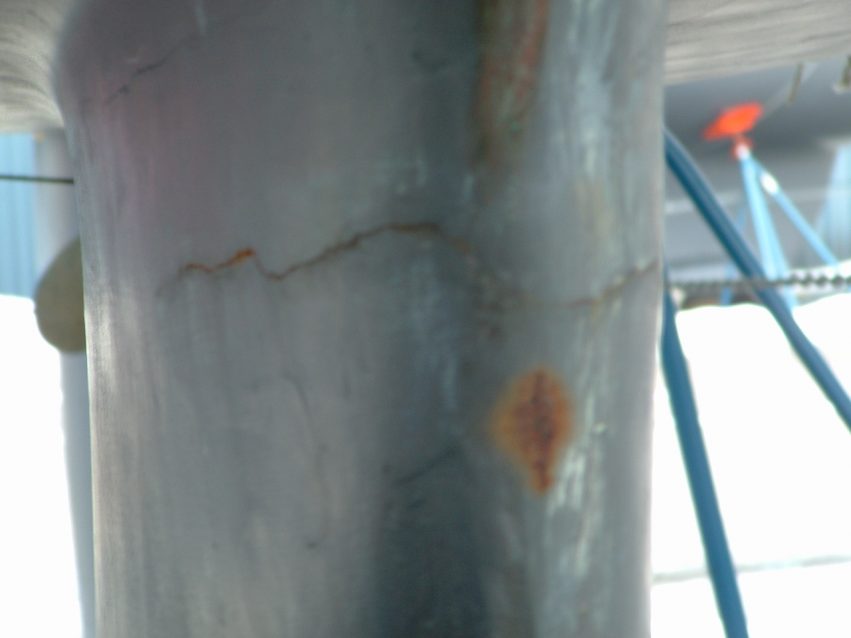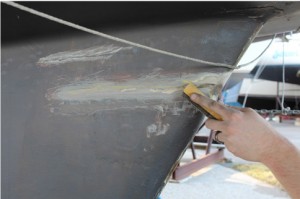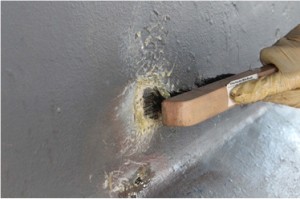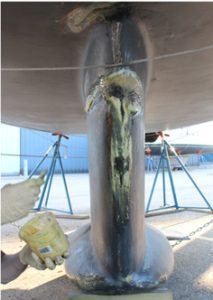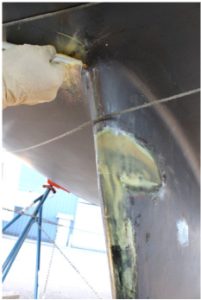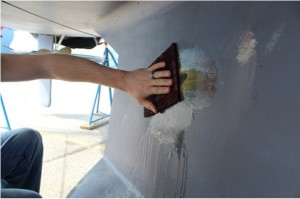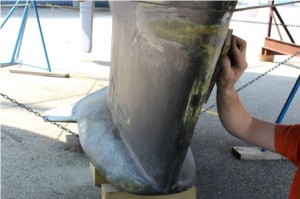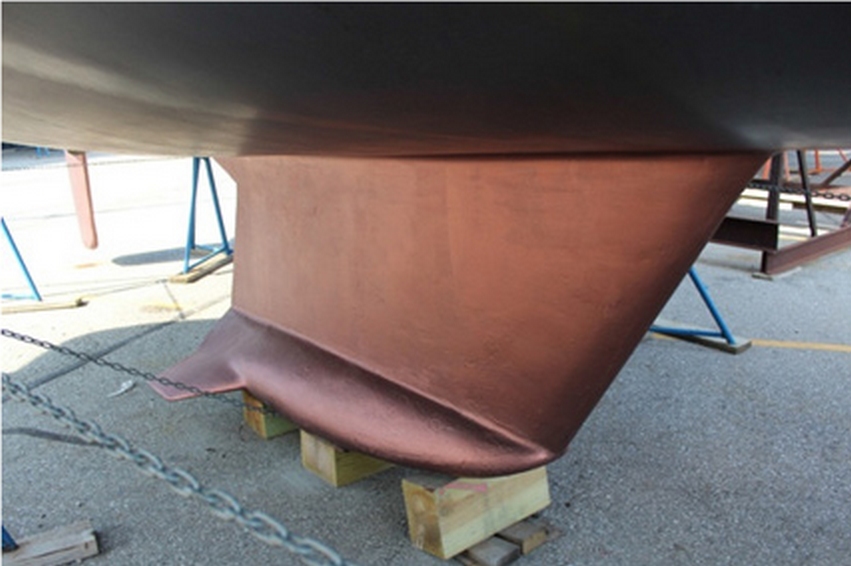
By Don Gutzmer – GBI Technical Advisor
The advantage of repairing a keel with G/flex Epoxy is that it is a toughened system that has a tensile elongation of more than 30 percent, which would prevent cracks from reappearing in the fairing compound. A local boat owner called our technical line and asked about repairing his cast-iron wing keel with WEST SYSTEM® Epoxy. He asked if a technical advisor would be willing to take a look at the cracks on his keel and recommend the best way to repair it. After looking at the boat I gave the customer a callback and recommended using G/flex® Epoxy. He asked if I knew of anyone in the area that could do the repair. I told him that I would be willing to take on the job and thought it would be a good opportunity to write an article about repairing a keel with G/flex Epoxy.
Here are the different steps I used to repair the keel with G/flex Epoxy. The pictures will help tell the story:
